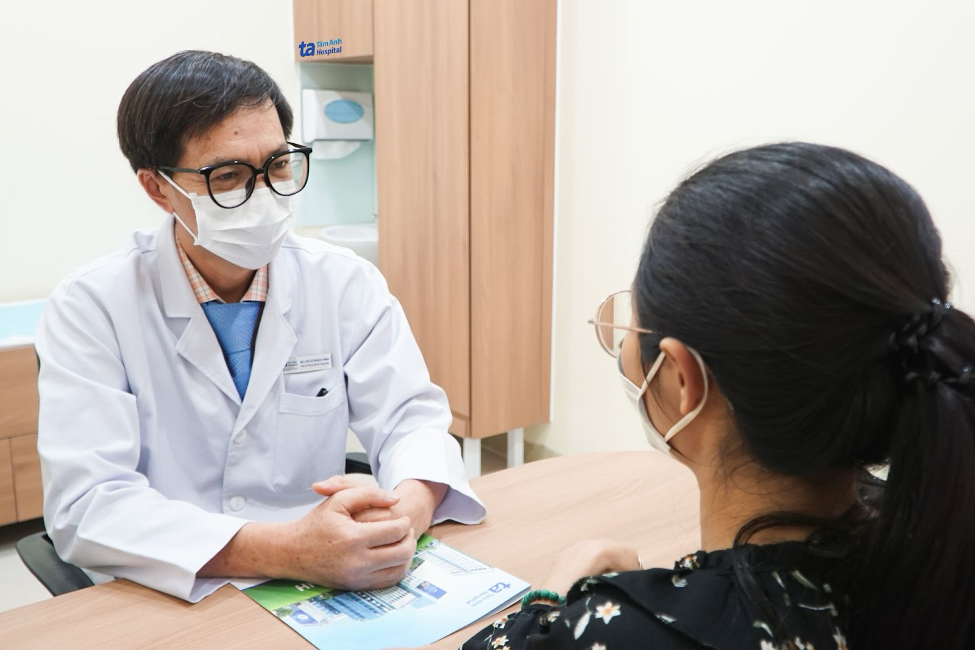Answer:
During breastfeeding, women commonly experience hard, thick, swollen areas in their breasts. These lumps can feel round or lumpy, appear in one or both breasts, and sometimes even under the arms, causing pain and discomfort. These are often milk lumps caused by blocked milk ducts.
Common causes of breast lumps during breastfeeding include mastitis, milk accumulation due to incorrect breastfeeding positions or latch, and increased milk production 1-2 months after childbirth. These lumps typically shrink as milk flows. However, if the blockage persists, the lumps can grow larger, causing inflammation and breast swelling. This can lead to fever, pain, and general discomfort. Without prompt treatment, there's a high risk of developing an abscess.
 |
Doctor Vinh advises a patient. Photo illustration: Tam Anh General Hospital |
Doctor Vinh advises a patient. Photo illustration: Tam Anh General Hospital
Other causes of breast lumps during breastfeeding include milk cysts, benign breast cysts, and fibroadenomas. Milk cysts form when milk ducts narrow or become blocked, trapping milk in a sac. These cysts are typically round, smooth, movable, and can range from 1-10 cm in size. They may shrink after the baby nurses. In some cases, milk cysts cause pain and require lancing or aspiration to drain the milk. Repeated procedures increase the risk of infection.
Breast fibroadenomas during breastfeeding are benign, painless lumps that appear in late pregnancy or during breastfeeding. They can grow rapidly due to hormonal stimulation and often disappear after breastfeeding ends. Malignant breast lumps during breastfeeding are rare. However, they can occur, presenting as hard, immobile lumps that don't shrink after nursing and may be accompanied by skin dimpling. If you experience these symptoms, consult a specialist in breast and head and neck surgery or oncology for proper examination and diagnosis.
Inflammatory breast cancer, characterized by redness, swelling, and pain throughout the breast, can be mistaken for mastitis. However, inflammatory breast cancer also involves skin thickening and, sometimes, nipple retraction.
Doctor Le Ngoc Vinh, M.D.
Department of Breast and Head and Neck Surgery
Tam Anh General Hospital, Ho Chi Minh City
| Readers can submit questions about cancer here for doctors to answer. |












